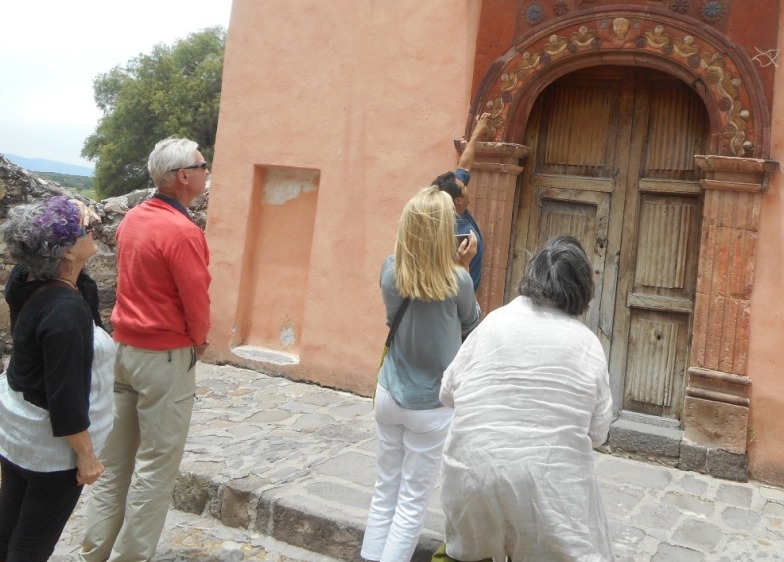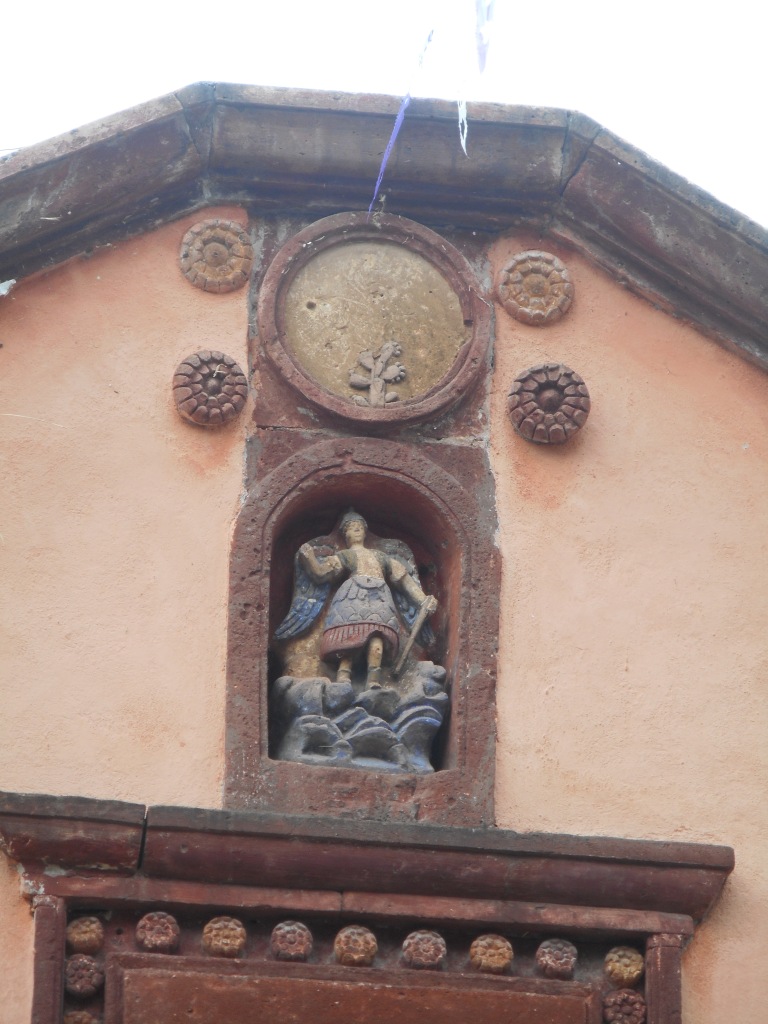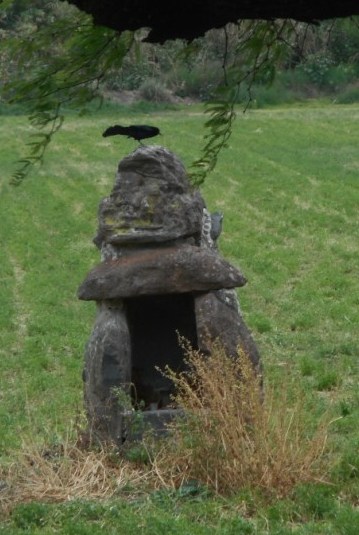Living many years in the South, great pride was taken to say you lived in “Old Town” followed by virtually any city’s name like Old Town Alexandria or Old Town Falls Church. We’ve our own “Old Town” and though the address isn’t as posh, it is easily home to the most fascinating chapel in San Miguel.
And that’s really saying something! We’ve ten times as many chapels as a city our size normally has in Mexico. Building a chapel was a great way for a wealthy Spaniard in the Colonial Era to support an uncle or aunt in a religious order, or simply keep the Inquisitor on your good side. Among our chapels we’ve the replica of the house Jesus grew up in, plus numerous with unique works of art from Europe and our own indigenous population. However, the chapel in San Miguel Viejo (Old San Miguel) is in a league of its own.
The chapel marks where the town was originally founded in 1542. When the dam was built in 1960 and folks were unsure just how large the presa (lake) would get the village was moved back with the chapel remaining in its original location. The lake didn’t ever get that large but when visiting you get a really good feel for what it felt like back when the original chapel was built being exposed on four sides and under near constant attack from the Chichimecas (indigenous hunter gathers).
Then one day the priest’s dog in San Miguel Viejo gamboled off. The priest found him where the outside laundry is today above Parque Juarez. Many guides, and books, will stress the town moved here for the spring water the dog found. Actually, old San Miguel had a lovely water source and it was security the new location offered. With mountains on one side the priest could now see attackers coming up and San Miguel de Chichimecas was born.
The chapel you see today in San Miguel de Viejo was built around 1720 and is filled with Otomi art. Otomis were the indigenous farmers here when the Spanish arrived and whom the nearby neighborhood with the state of the art equestrian center is named for.
The church is an orange shade the art historian doing restoration work discovered was the original color for the building.
Over the door you’ll Jesus and the twelve apostles along with suns and moons. Twelve apostles plus one Jesus equals thirteen, the Otomi number representing new life. Since the Otomi didn’t ever see a crown of thorns, Jesus appears to be wearing a spiffy headband.
Above Jesus are some angels whose boots Nancy Sinatra would be proud to wear. Again, the Otomi didn’t see angels in their culture but figured since the Spanish wore boots, perhaps angels did too.
There are plenty of four petal flowers and other designs with four points representing the four directions of the wind prayers are offered to by the indigenous. Plus there are the pass through windows allowing the wind god to pass on by and not linger allowing him a chance to pilfer a local baby. (And why babies are still dressed for the tundra regardless of the heat. It is an ancient protective habit keeping babies from getting sick from an ill wind and being taken by the wind god.)
Outside the church are four Calvarios, the most I’ve ever seen. A Calvario (named for the hill Jesus dies on) is a small outdoor structure with an opening to place a cross and flowers. It is where the indigenous prayed to their ancestors before entering the chapel.
High up on the chapel, above St. Michael, is a circle displaying a cacti. Cacti were considered the greatest gift from the old gods and worthy of honor above St. Michael, representing the new faith.
As always, the courtyard is fenced since the indigenous preferred to worship outside since the divine is part of the circular cycle of nature, not found inside a building. You’ll notice the Stations of the Cross marked but not adding up to the customary 14 stations marking the story of Jesus’ Crucifixion (today there are 15 stations). That’s because the stations continue inside and so should you before one of the daily masses in the late afternoon.
You’ll notice two outstanding and ancient architectural features. One is the font with holy water shaped like a pomegranate in season. The rich, juicy, red fruit represents Jesus’ heart and his everlasting love.
If you manage to get back to where the priest readies for mass you’ll see the original baptismal font with a stone angel having indigenous facial features and sporting movable arms. Every ancient statue I’ve seen in town has some ability to move which adds a bit of drama to any procession.
Like the nearby Silver Route the covered wagons traveled for centuries, the chapel at San Miguel Viejo provides a great feel and energy to what life was like back when nothing about the town of San Miguel was old.
Joseph Toone is the Historical Society’s short-story award winning author of the SMA Secrets book series. All books in the series are Amazon bestsellers in Mexican Travel and Holidays. Toone is SMA’s expert and TripAdvisor’s top ranked historical tour guide telling the stories behind what we do in today’s SMA. Visit HistoryAndCultureWalkin






